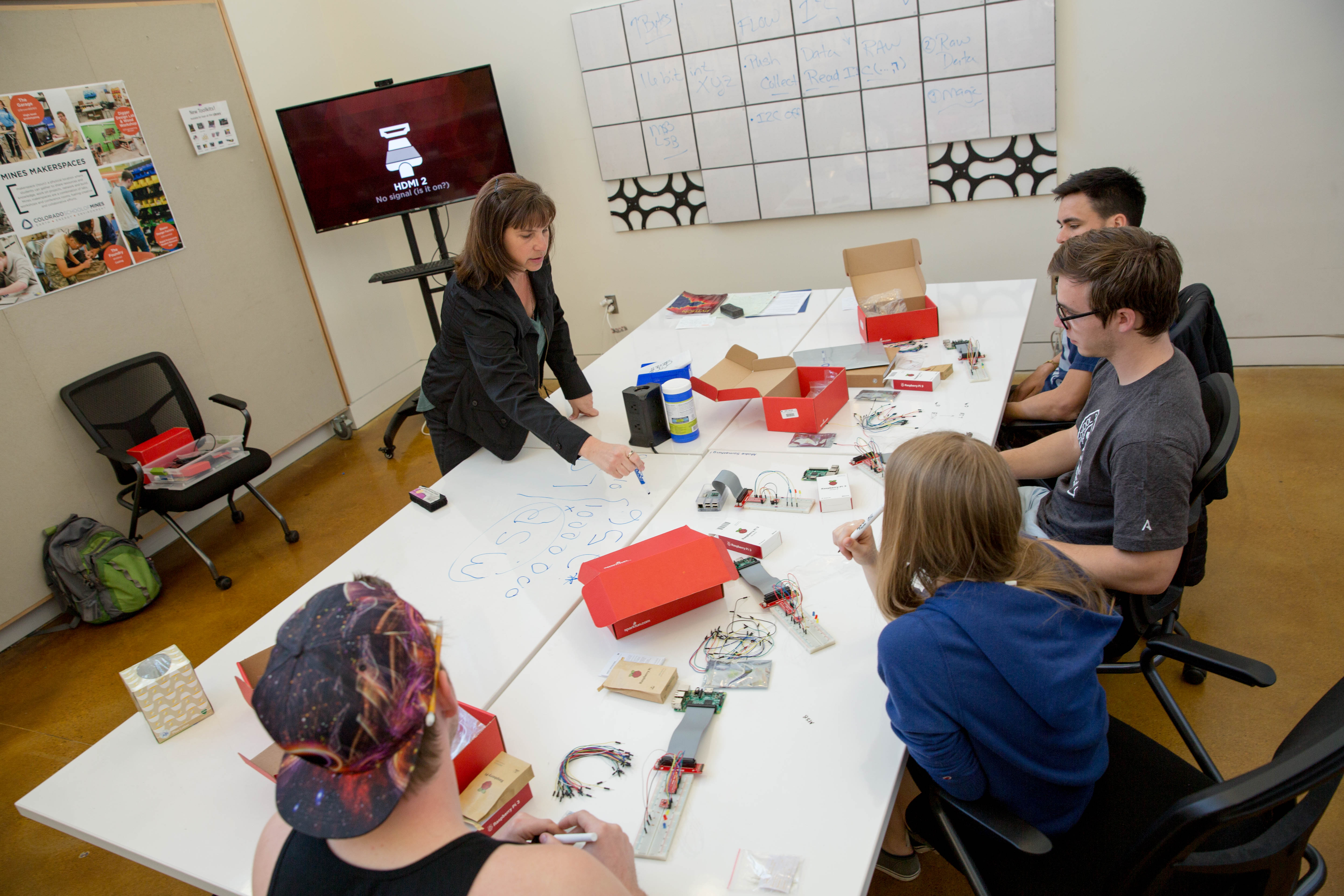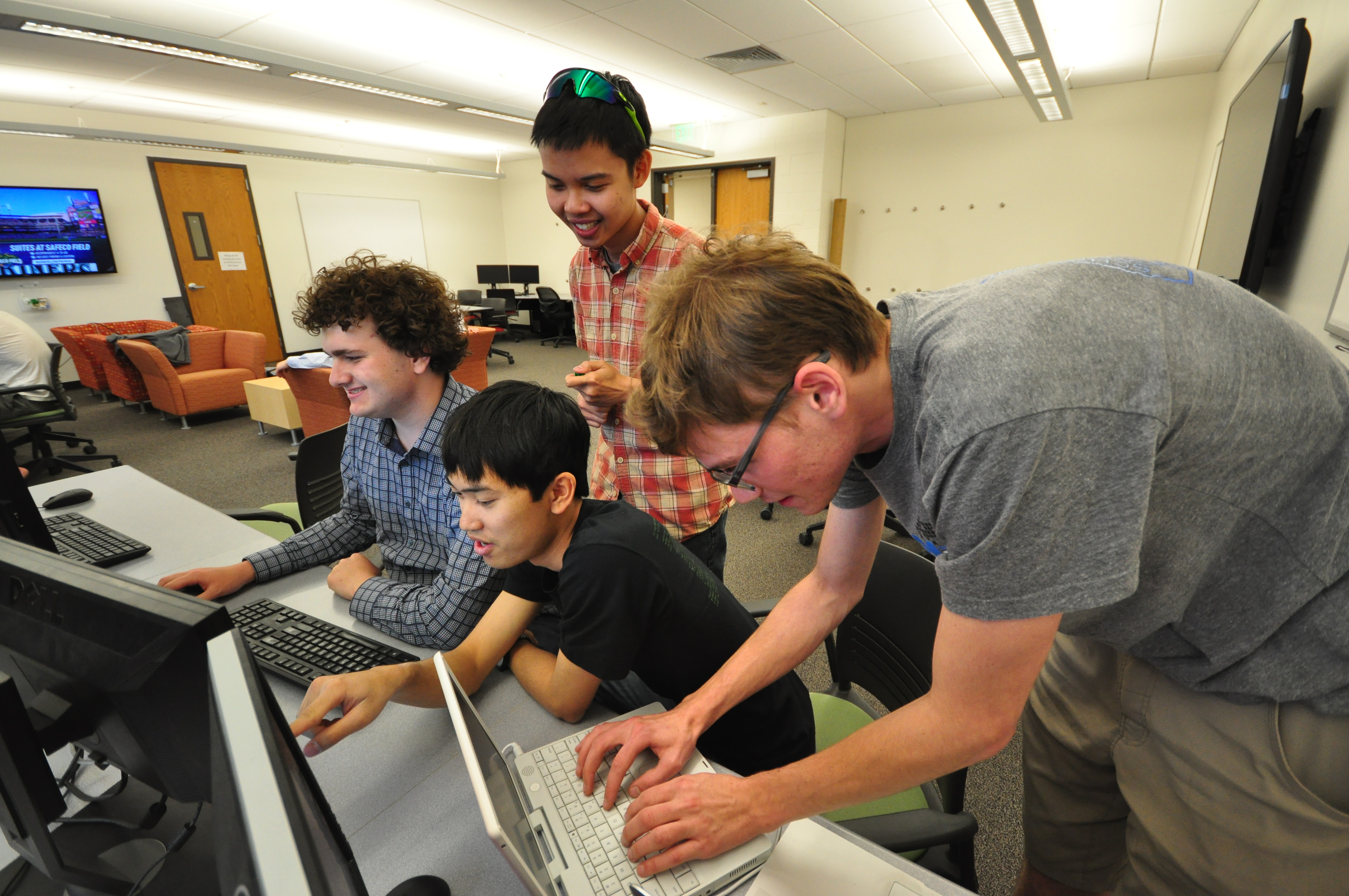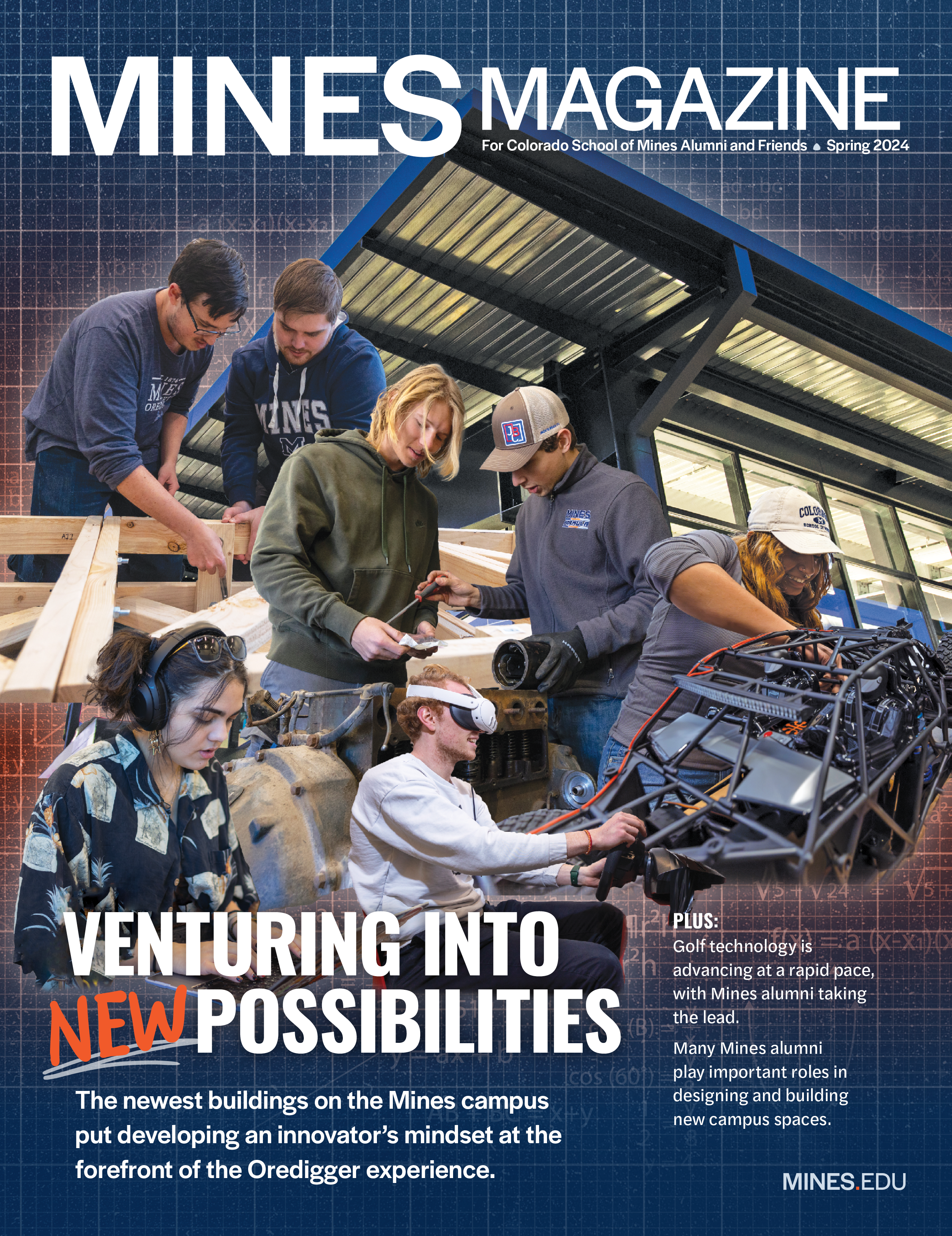Catching Code: Computer science is on the rise at Mines and across the country

Computer science junior Nhan Tran found himself very popular at the most recent Colorado School of Mines Career Fair.
“Recruiters talked to me right away as soon as they saw that my name tag said ‘computer science,’ even when they’re not from tech companies,” said Tran, who’s interning this summer with Google’s Nest Labs, which develops and produces smart home products, and hopes to work in the tech industry after graduation.
This tremendous demand for computing skills across many industries translates into more students who want to major in computer science and more students in other programs taking computer science courses, challenging departments and universities across the country to meet the demand.
The number of computer science majors at doctoral-granting institutions has tripled in the past decade, according to a report released in February 2017 by the Computing Research Association’s Enrollment Committee, chaired by Mines Computer Science Department Head and Professor Tracy Camp.
At Mines, the number of computer science majors increased 61 percent between Fall 2011 and Fall 2016. The number of students pursuing a minor has grown every year for the last five years, and over the past three years, the Department of Computer Science has seen a 68 percent increase in the student credit hours it is teaching.
“Here at Mines, we feel that we are just starting to see the surge occur,” Camp said. “If you talk to Admissions, more students are applying with interest in computer science than they’ve seen in past years—450 accepted students listed CS as their potential major.”
That’s almost 10 percent of the students admitted to Mines, said Kevin Moore, dean of the College of Engineering and Computational Sciences, which includes the Computer Science Department. He predicts computer science could soon be the third-largest undergraduate degree program at the university, behind mechanical engineering and petroleum. (The Department of Chemical Engineering has about 700 undergrads, but they are divided equally between two degree programs.)
“Seventy-seven percent of new STEM jobs require people who are trained in computing,” Camp said. “Students and parents are realizing that there are a lot of unfilled jobs out there requiring computer science skills.”

“There was a joke going around that oil companies were hiring more computer science graduates than petroleum engineers,” said Sam Sartor, a CS major graduating in December 2018. “It’s almost like the 2000s again,” he said. “Internet services are huge.”
“People I know in computer science are looking at web/mobile careers,” said Jonathan “Sumner” Evans, a junior who plans to go into software development. “It’s generally fairly secure right now.”
But Sartor stresses that Mines grads are in high demand, because they can do more than just make a website. “Mines teaches the fundamentals—how to solve problems, how databases are defined,” he said. “Once you leave Mines, you can program anything.”
Tran knows at least a couple of students who have switched majors from more cyclical industries or added CS as a second major to increase their chances of being employed. He’s also seeing a lot more students in other programs taking intro-level computer science courses.
Blakelee Mills ’10 knows firsthand the value computing knowledge can add to a graduate’s resume. The Mines alumna, who earned a bachelor’s degree in applied mathematics, has served as CEO of Golden Software for the past two and a half years and has been with the company for nine. The firm specializes in scientific graphics software, transforming data into easy-to-understand visual formats such as maps, graphs and models.
Founded in 1983 by Mines computer science instructor, Patrick Madison, and graduate mining student, Dan Smith, Golden Software serves industries such as mining, oil and gas, engineering and medicine. And while it employs quite a few Mines graduates, a computer science degree isn’t a necessity.
“It can definitely go both ways,” Mills said. “If you have a better handle on pure coding, you have to be curious about what the customer wants. On the flip side, a self-taught programmer with industry experience also needs to be curious on the development side. They can both succeed.”
While Mills only took the basics in computing at Mines, she encourages current students to learn more. “I would highly, highly recommend that anybody in any industry pair their focus with computer science—even just understanding basic concepts and learning how to automate tasks,” she said. “There’s always room for the computer science component.”

The emerging Internet of Things—where everyday objects are connected and constantly sending and receiving data—and the need to process all that data and keep it secure will also provide many opportunities for computer scientists.
So while the economic benefits of studying computer science are easy to understand, the possibility of pairing it with myriad pursuits is another reason students are flocking to the discipline.
Tran’s passion, for example, is robotics. While electrical and mechanical engineering play huge roles in the development of robots, growing emphasis on autonomy and artificial intelligence means computer scientists are critical to the latest advances in the field.
He also wants to strike out on his own after putting in some time with industry to learn the business and make connections. “I have ideas in mind from hackathons and collaborations I’ve participated in,” Tran said. “A third of the computer science people I know would love to do a start-up, because with coding you can make anything—make a new app, a new website,” all without having to, say, find a manufacturer as you would with a physical product.
Sartor, who has been passionate about computer graphics since discovering the joys of the sandbox video game Minecraft, is interested in exploring how virtual reality technology might be applied to business. “I’m going to start my own company—I can’t sit still working on other people’s projects,” he said.
This diversity can also be seen in the research taking place across the Mines campus.
Computer Science Assistant Professor Hua Wang recently received an NSF CAREER Award for a research project to mine various kinds of data to detect neurological diseases, such as Alzheimer’s or Parkinson’s, sooner. It’s an approach that could be used to address other conditions, such as HIV/AIDS.
Another NSF CAREER Award recipient, Mechanical Engineering Assistant Professor Xiaoli Zhang, is developing robots that are easier to control because they anticipate what their operators are trying to accomplish. Autonomous robots and intelligent machines are also the focus of research in mining engineering. Computer Science Associate Professor Qi Han is part of a project to design a network of sensor nodes and smartphones to improve safety in mines underground by detecting signs of danger and helping direct rescue efforts during emergencies.
“I think a lot of smart kids understand that there are great job prospects in computer science, and it’s also an intellectually pleasing field to be in,” said Moore. He says computer science students are some of the smartest students at Mines, and “they see it as a way to get their geek on, to be in a field where they can do the algorithmic stuff and get a good job.”
In addition to national trends, changes in how computer science fits into the structure of Mines may have also played a role in the recent growth of the program.
From the 1990s up until 2012, the university had a Department of Mathematical and Computer Sciences, offering an undergraduate degree of the same name, and students could choose an emphasis in applied mathematics, statistics or computer science.

This changed with the establishment of the Department of Electrical Engineering and Computer Science and the creation of BS, MS and PhD programs in computer science. Now EE and CS are their own departments, giving even more prominence to the program.
“Certainly, creating those named degrees affected the visibility of the program and made it more attractive,” Moore said. Moore also believes a course called Introduction to Computer Science is persuading students to enter the discipline. “We have great faculty in CS, especially the teaching faculty who do a lot of the core program,” he said.
But all this growth does not come without its challenges. Diversity is a concern, with a student population that is mostly male. Computer science faculty are teaching more credit hours than ever, and Camp is not inclined to limit the number of non-majors in CS courses or charge additional fees, as other institutions have done. In fact, she wants more students to be required to take them. “I strongly believe every major at Mines should be taking a class or two in computer science,” she said.
Moore has made faculty hiring in CS a priority, although high demand for PhD graduates in academia and industry makes this challenging as well. “There are more positions than there are people,” Moore said, but they’ve had recent success in their searches.
The department has also been innovative in providing access to students, using TAs and “flipped classrooms” where instruction is delivered online while class time is spent writing code. “It’s more collaborative,” Moore said. “They use the web as a resource, and they’re up there on the cutting edge.”
The department will need to stay on the cutting edge to keep up with a field that offers limitless possibilities. “You could fill a bookshelf with encyclopedias of what happens when you type a simple search into the basic Google box,” said Sartor, as an example. “Computer science is a layer cake, and no single person in the world understands how the whole thing works.”


